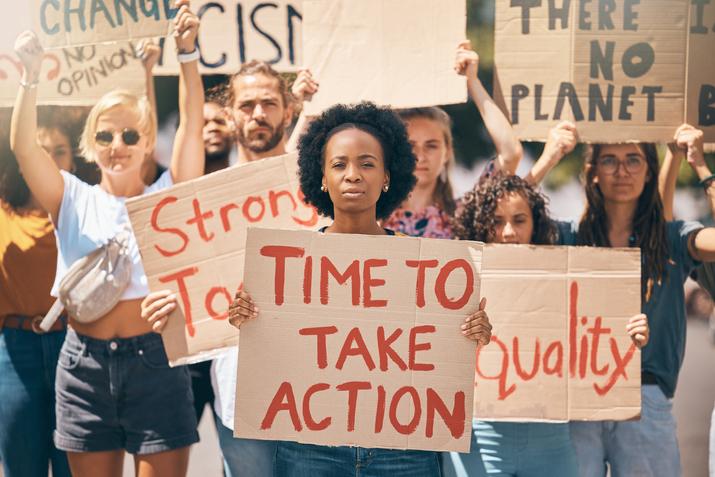
Empowering women leaders in fighting climate change: a call to action
Achieving gender balance goes beyond mere representation, writes Tahseen Jafry. Tackling the climate crisis necessitates a profound shift among the next generation of leaders towards gender-sensitive decision-making processes
You may also like
Popular resources
Technical innovations alone cannot resolve the climate crisis. Solutions must emerge from grass-roots efforts that address the needs of entire societies.
Central to this effort is the representation of women in decision-making processes where policies and actions are crafted and implemented. Despite women comprising half of society, women’s voices and perspectives are often absent from crucial discussions. A case in point is the United Nations Framework Convention on Climate Change’s Conference of Parties (COP) events, where the collective vision for combating climate change is shaped by 197 countries. At COP events in Glasgow, Egypt and the UAE, I have observed that men overwhelmingly dominate the discourse — 74 per cent of plenary attendees at COP26 in 2021 were men.
- What I learned from COP28: In-person events are still necessary
- Driving change: creating student-NGO partnerships for climate solutions
- A practical approach to tackling eco-anxiety
My observations at these events were sadly unsurprising. Three decades ago, I embarked on my professional journey in international development, during an era focused on “women in development”. My work, which centred on designing and implementing clean cookstoves for rural women in India, was addressing a climate-related issue, but we didn’t realise the significance of this at the time.
Today, the disconnect between women’s needs and the solutions offered persists and underscores a fundamental issue: the absence of a gender-focused approach to problem-solving. While the terminology has evolved to encompass broader gender perspectives, gender parity in decision-making roles has not. Alarmingly, the relative position and power of women leaders have deteriorated over the years, exacerbated by their disproportionate exposure to climate change impacts and associated challenges, including gender-based violence and mental health strains. With the clock ticking on the climate emergency, urgent action is imperative.
Universities have a pivotal role to play in redressing gender parity in decision-making. They are well placed to foster awareness and develop the capability among students to approach climate science (and the area of sustainability more generally) with gender neutrality. This agenda must be central for our future leaders, no matter what their gender.
The way forward, as I see it, is to build capacity among our student population. We need to consider embedding not just relevant support in terms of learning and teaching material within courses but positioning the concept of “inter-generational climate justice” at the core of what is being taught. Inter-generational climate justice is concerned with acting now to meet the needs of future generations. Our students are our future leaders, whom I believe can instinctively drive gender parity in the climate space.
By way of approach, my advice follows three basic steps that revolve around co-creation, co-understanding and co-producing solutions via bottom-up rather than top-down thinking.
The three steps need to be tailored and embedded around the specific subjects being taught, and the steps are also a good way of introducing the idea of gender neutrality.
The first is a process of enquiry to understand the basics from students on their opinions and understanding of gender-nuanced thinking and climate change.
The second is initiating conversations and discussions to uncover what they perceive as the challenges and which of these they consider to be important to overcome and break barriers. This could be policy, practice, behavioural change or attitudes.
The third step is to co-produce solutions in the context of course and subject matter that can be taken away and put into practice. This could be immediate takeaways in day-to-day activities or carried forward, so that the inspiration and motivation remain as graduates move into their future careers.
Ultimately, it is important to effectively communicate and demonstrate the relevance of gender balance in the subject being studied. Critical issues on gender should be integrated across a range of programmes to a point that our students become “gender-just intrinsic thinkers” in tackling climate change.
My experiences at events such as COP underscore the necessity for societal transformations that are both climate-smart and climate-just, with women’s leadership playing a central role. Achieving gender balance goes beyond mere representation; it necessitates a profound shift towards gender-sensitive decision-making processes. This entails prioritising training and awareness initiatives, particularly among the younger generation – our future leaders – who will shape the discourse in the coming decades.
As an educator and advocate for climate justice, I am privileged to influence change through learning at Glasgow Caledonian University (GCU). By sharing insights gleaned from my experiences across 16 countries, I contribute to fostering a climate-conscious mindset and empowering future leaders to drive meaningful change. It aligns with GCU’s commitment to climate justice and the common good, embodying the imperative for collective action in addressing the climate crisis.
Tahseen Jafry is director of the Mary Robinson Centre for Climate Justice in the department of civil engineering and environmental management at Glasgow Caledonian University.
If you would like advice and insight from academics and university staff delivered direct to your inbox each week, sign up for the Campus newsletter.
Additional Links
See our International Women’s Day spotlight for more advice and resources from women leaders in higher education.




